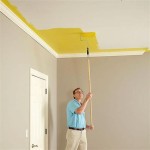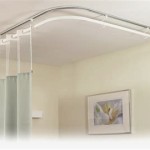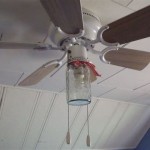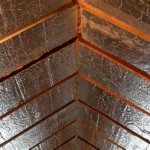What Kind of Paint to Use on a Bathroom Ceiling
The bathroom, with its high humidity levels, presents a unique challenge when it comes to choosing paint. Ordinary paint formulations are often inadequate for withstanding the constant moisture, leading to peeling, blistering, and the growth of mold and mildew. Selecting the right type of paint for a bathroom ceiling is therefore crucial for ensuring longevity and maintaining a healthy environment. This article will explore various paint options and their suitability for this specific application, taking into account factors such as moisture resistance, mildew protection, and durability.
Understanding the Bathroom Environment
Before delving into specific paint types, it is important to understand the specific environmental conditions within a bathroom. The primary concern is high humidity. Showers and baths generate significant amounts of steam, which condenses on surfaces, including the ceiling. This persistent moisture can penetrate paint films, weakening the adhesion and creating an environment conducive to mold and mildew growth. Poor ventilation exacerbates this problem, trapping moisture and prolonging the time it takes for surfaces to dry. Temperature fluctuations also play a role. The rapid changes from hot, steamy conditions to cooler, drier periods can stress the paint film, contributing to cracking and peeling. Therefore, the ideal paint for a bathroom ceiling must be specifically formulated to withstand these challenges.
Key Properties of Bathroom Paint
To effectively protect a bathroom ceiling, the chosen paint must possess several key properties. Moisture resistance is paramount, with the paint acting as a barrier to prevent water from penetrating the underlying surface. Mildew resistance is equally important, as it inhibits the growth of mold and mildew, which can not only damage the paint but also pose health risks. Adhesion is critical to ensure the paint film adheres firmly to the ceiling surface, preventing peeling and blistering. Durability is another important factor, as the paint should be able to withstand frequent cleaning and scrubbing without deteriorating. Finally, good coverage is desirable, as it minimizes the number of coats required, saving time and materials.
Types of Paint Suitable for Bathroom Ceilings
Several paint types offer varying degrees of suitability for bathroom ceilings. Each type possesses unique characteristics that make it more or less effective in combating the challenges of a high-humidity environment. The following sections will examine the most common and recommended types.
Acrylic Latex Paint
Acrylic latex paint is a popular choice for interior painting due to its versatility, durability, and ease of application. It offers good adhesion, flexibility, and resistance to cracking and peeling. High-quality acrylic latex paints also exhibit excellent moisture resistance, making them a suitable option for bathrooms. Look for paints specifically labeled as "bathroom paint" or "kitchen and bath paint," as these formulations often contain added mildewcides and are designed to withstand higher humidity levels. The acrylic polymers in these formulations create a tighter, more durable film that resists moisture penetration.
Enamel Paint
Enamel paint, known for its hard, durable finish, provides excellent moisture resistance. It creates a smooth, non-porous surface that is easy to clean and less susceptible to mold and mildew growth. However, traditional oil-based enamel paints have high VOC (volatile organic compound) content and can be difficult to apply. Water-based acrylic enamel paints offer a more environmentally friendly and user-friendly alternative, providing similar durability and moisture resistance with lower VOC emissions and easier cleanup. While traditionally used on trim and doors, acrylic enamel paints offer excellent protection for ceilings as well.
Epoxy Paint
Epoxy paint stands out for its exceptional durability, water resistance, and chemical resistance. It forms a hard, non-porous coating that is virtually impenetrable by moisture. Epoxy paint is commonly used in commercial bathrooms and kitchens due to its ability to withstand harsh cleaning chemicals and high-traffic conditions. However, epoxy paints typically require more surface preparation than other paint types and may involve a two-part mixing process. They also tend to have a higher sheen level, which may not be desirable for all bathroom designs. Furthermore, the application process can be more complex, often requiring specialized equipment and techniques. Therefore, while offering superior protection, epoxy paint might represent an over-engineered solution for most residential bathroom ceilings.
Ceiling Paint
While not a paint type itself, it’s crucial to consider paints specifically labeled as “ceiling paint.” These paints are formulated with properties that make them ideal for ceilings, including a non-drip or spatter-resistant formulation, which significantly reduces mess during application. They also often have a very flat finish. A flat finish is desirable on ceilings because it hides imperfections, which is particularly useful in bathrooms where moisture can exacerbate surface irregularities. While standard ceiling paints might not offer the specific mildew resistance needed for a bathroom, it's possible to combine a ceiling paint with a mildew-resistant primer. In such a configuration, the primer provides the necessary protection against mold and mildew, while the ceiling paint ensures a smooth, even, and aesthetically pleasing finish.
Primers for Bathroom Ceilings
Regardless of the chosen paint type, priming the ceiling before painting is highly recommended. A primer serves several important functions. It seals the surface, providing a uniform base for the paint and improving adhesion. It also blocks stains and prevents them from bleeding through the topcoat. Most importantly for bathrooms, a primer can provide an additional layer of moisture and mildew resistance. Look for primers specifically formulated for bathrooms or kitchens, as these products contain mildewcides and are designed to withstand high humidity levels. Applying a coat of primer before painting significantly enhances the longevity and performance of the paint finish.
Surface Preparation
Proper surface preparation is essential for ensuring a successful paint job. Begin by thoroughly cleaning the ceiling to remove any dirt, dust, grease, or mildew. Wash the ceiling with a solution of warm water and mild detergent, or use a commercial mildew cleaner if necessary. Rinse the ceiling with clean water and allow it to dry completely. Scrape away any loose or peeling paint with a putty knife or scraper. Fill any cracks or holes with patching compound and sand the surface smooth. If mildew is present, treat the affected areas with a bleach solution (one part bleach to three parts water) to kill the mold spores. Rinse the ceiling thoroughly and allow it to dry completely before priming and painting. Skipping or skimping on surface preparation will almost certainly lead to paint failure, negating the benefits of even the highest-quality paint.
Paint Finishes and Sheen Levels
The sheen level of the paint also plays a role in its performance and appearance in a bathroom. Higher sheen levels, such as semi-gloss or gloss, offer greater moisture resistance and are easier to clean. However, they also tend to highlight imperfections in the surface. Flat or matte finishes, on the other hand, conceal imperfections but are more porous and less resistant to moisture. For bathroom ceilings, a satin or eggshell finish is often recommended as a compromise between moisture resistance and aesthetic appeal. These finishes offer a subtle sheen that is easy to clean and relatively forgiving of imperfections. Ultimately, the choice of sheen level depends on personal preference and the condition of the ceiling surface.
Application Techniques
Proper application techniques are crucial for achieving a professional-looking paint job. Use a high-quality roller or brush to apply the paint evenly, working in smooth, consistent strokes. Avoid applying the paint too thickly, as this can lead to drips and runs. Apply multiple thin coats rather than one thick coat, allowing each coat to dry completely before applying the next. This ensures better adhesion and a more durable finish. Pay attention to corners and edges, using a brush to cut in neatly. If necessary, use painter's tape to mask off adjacent surfaces. Work in a well-ventilated area to avoid inhaling paint fumes. Following these application techniques will help ensure a smooth, even, and long-lasting paint finish.
Ventilation Considerations
Adequate ventilation is essential for preventing moisture buildup in the bathroom and prolonging the life of the paint finish. Ensure that the bathroom is equipped with a functioning exhaust fan that vents to the outside. Run the exhaust fan during and after showers and baths to remove excess moisture from the air. Consider installing a timer switch for the exhaust fan to ensure that it runs for an adequate amount of time after use. In addition to the exhaust fan, opening a window while showering or bathing can also help improve ventilation. Improving ventilation will reduce the humidity levels in the bathroom, minimizing the risk of mold and mildew growth and extending the life of the paint job.

Ceiling Paint For Bathroom Prestige Painting Gta

Painting A Bathroom Ceiling And Adding Trim Young House Love

Bathroom Paint Colors Every Shade You Should Consider Décor Aid

Choose The Right Type Of Paint For Your Bathroom

How To Choose The Right Type Of Bathroom Ceiling Paint

Painting A Bathroom Ceiling And Adding Trim Young House Love

Best Paint For Steamy Bathroom Ceiling Eco Inc

Best Paint For Bathroom Ceiling Guide

Best Paint For Bathroom Ceiling Guide

Ceiling Paint For Bathroom Prestige Painting Gta
Related Posts








